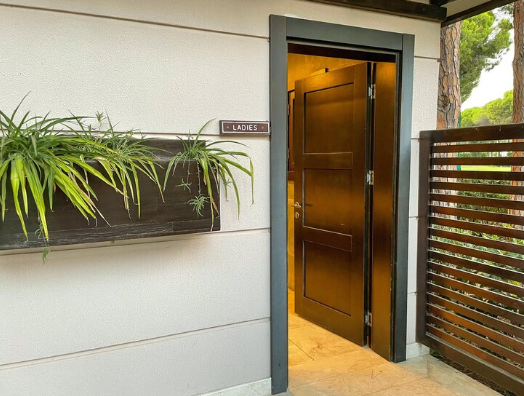Essential Safety 9 Features For Overhead Doors
Overhead doors are a staple in many commercial, industrial, and residential settings due to their convenience and space-saving design. However, their large size and frequent use mean that safety is a critical concern. To ensure the well-being of users and the protection of property, overhead doors are equipped with various safety features. Here are some essential safety features that every overhead door should have:

Safety Sensors
One of the most critical safety features of overhead doors is the presence of safety sensors, also known as photo-eye sensors. These sensors are typically installed near the floor on either side of the door. They emit an invisible beam that, when interrupted, signals the door to stop closing and reverse direction. This feature is crucial in preventing injuries to people and pets and damage to objects that may be in the door’s path.
Auto-Reverse Mechanism
The auto-reverse mechanism works in conjunction with safety sensors. If the door encounters an obstruction while closing, the mechanism automatically reverses the door’s direction. This feature is vital in preventing accidents and ensuring that the door does not exert excessive force on any object or person in its way.
Manual Release
In the event of a power outage or malfunction, the ability to manually open or close the overhead door is essential. A manual release mechanism allows users to disengage the door from the opener and operate it manually. This feature ensures that the door can be safely opened or closed without relying on the automated system.
Pinch-Resistant Panels
Pinch-resistant panels are designed to prevent fingers from being caught between the door’s sections as it opens or closes. These specially designed panels reduce the risk of hand injuries, making the door safer for users of all ages.
Rolling Code Technology
Security is also a safety concern, particularly for residential overhead doors. Rolling code technology enhances security by changing the code used to open the door each time the remote is pressed. This prevents unauthorized access and reduces the risk of code grabbing by potential intruders.
Emergency Stop Button
Especially in heavily populated industrial or commercial areas, an emergency stop button is very useful. Evaluating the lock Enables users to instantly stop the operation of the door as soon as there is an emergency. More often than not, it is situated in an area that is convenient to access by anyone to prevent anyone from getting caught up by the door where it is installed.
Edge Sensors
Edge sensors are usually mounted on the underneath of the door, near the bottom of the door rail. These sensors alert the door of an object or a person nearby and cause it to halt its operation and close in the opposite direction. Bottom edge sensors are applied in a situation when the bottom part of the door is likely to hit the equipment or persons.
High-Visibility Warning Systems
For the door to move, the users are warned by visual and audible warning signs. Signals of blinking lights and beep noises give a clear sign that the door is moving to ensure that persons around are fully aware of the door operations to avoid an unfortunate event.
Proper Installation and Regular Maintenance
Although it is not a feature, it is crucial to mention the correct installation and maintenance of the chosen system. Only professionals can install overhead doors as all the safety aspects of the doors require proper functioning. Maintenance check is also important in order to know the possibility of having a problem and solve it before it causes a major problem to the door so that the door can continue to be used safely.
Conclusion
The first thing that anyone would think of regarding Overhead doors is that they are very safe. Safety devices and features like safety sensors, auto-reverse mechanism, manual release, no pinch zones, rolling code, stop buttons, edge sensors, high visibility signals, and many more can play a key role in minimizing accidents and mishaps. Additional diversity to the installation procedures and maintenance always increases the probability of the needed safety and reliability of such doors. It provides the users of such doors in residential, commercial, and industrial premises with the needed level of safety.
